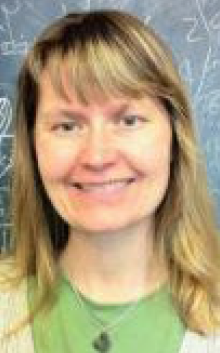
KATE SCHOLBERG is a Professor of Physics at Duke University where her broad research interests include experimental elementary particle physics, astrophysics and cosmology. Her main specific interests are in neutrino physics. Dr. Scholberg studies neutrino oscillations with the Super-Kamiokande experiment where her primary involvement is with the atmospheric neutrino data analysis, which in 1998 yielded the first convincing evidence for neutrino oscillation (implying the existence of non-zero neutrino mass).
- Why do you think understanding Neutrinos is so important and how might it help us understand the universe? How is Neutrino research impacting physics?
Neutrinos are fundamental particles, like electrons and quarks, and we need to understand the properties of the fundamental constituents of matter if we are to understand the “big picture” of Nature. Neutrinos also played a role in the early Universe. It is very likely that neutrinos were important in the generation of matter at very early times in the Universe’s history. One of the huge questions out there is why we have an enormous excess of matter today, rather than antimatter, given that the properties of matter and antimatter are almost symmetric. Neutrinos were probably involved in the generation of the matter-antimatter imbalance. Therefore we need to understand the properties of neutrinos in order to figure out how the Universe became so matter-heavy.
Can you explain how SNEWS gathers information about Supernovas? And do you have any theory on when the next event might occur?
SNEWS (Supernova Early Warning System) is a network of large underground neutrino detectors. Any one of these detectors would see an intense burst of neutrinos within about 10 seconds if a star’s core collapses in the Milky Way. Any of the detectors, if they see such a burst, will send a datagram to the central SNEWS computer. If this computer receives at least two datagrams indicating bursts within 10 seconds of each other, it sends out an alert message. Individual experiments, if they have really clean signals, can also send individual alerts, but two or more at the same time will mean we are sure that something happened.
Unfortunately the kind of core-collapse supernova burst that would result in a SNEWS alert is really rare— it will happen only about every 30 years or so in the Milky Way. We have no good way of predicting when or where it happens next, although we can keep an eye on some red giant stars, like Betelgeuse, which might blow up any minute (or 10,000 years from now-- it’s hard to tell for an individual star). Some stars, in the months and days before they blow up, may produce extra neutrinos, and we will be watching for that too, but such a presupernova neutrino signal would be so faint that we could only see it for very nearby stars (Betelgeuse is one of them). The rarity of such a stellar blowout does mean that it’s especially important to be prepared, so that we can capture all possible information, in neutrinos, photons, and other astrophysical messengers, like gravitational waves.

Do you think the Hyper K proposal will be approved and why is it important?
It can be harder to make funding predictions than supernova ones! Hyper-K is certainly a good prospect. It will see a truly enormous number of neutrinos (actually, mostly antineutrinos) from a supernova. The Deep Underground Neutrino Experiment (DUNE) in the U.S. is also a good future prospect. It will see fewer neutrinos than Hyper-K, but because it’s made of argon rather than water, it will see mostly neutrinos, whereas Hyper-K will see antineutrinos. This will bring us unique information about, for example, the star’s collapse into a neutron star. JUNO in China is another future large detector, to be made of hydrocarbon, which will see antineutrinos. Deep Underground Neutrino Experiment (DUNE), will be the largest particle physics project ever to be built in the United States. Hosted by the U.S. Department of Energy’s Fermilab, this international project brings together more than 1,000 scientists from more than 30 countries around the world, all dedicated to unraveling the mysteries of ghostly particles called neutrinos. To do this, Fermilab will send its world-leading particle beam 800 miles (1,300 kilometers) through the earth to four gigantic detectors built a mile beneath the surface at the Sanford Underground Research Facility in South Dakota. A liquid-argon neutrino detector, pre-excavation work is in full swing at the site in Lead, South Dakota.
Can we create images of the Elusive Neutrinos Using AFM/SPM?
“Well, I think AFM, SEM, etc. won’t be of much use, I’m afraid,” says Dr. Scholberg “One cannot directly see a neutrino. What one does see is the tracks or other evidence of charged particles that result from the rare interaction of the neutrino with matter, and one can make images out of this information. There are a lot of different detector technologies. Usually the images are electronic: for example, the charged particles make Cherenkov light, and then photo sensors capture and digitize the photons, making lovely ring images. In other detectors, like DUNE (a “time projection chamber”), the charged particles from the interaction ionize liquid argon, and the ionization charge is drifted in a high electric field placed on the argon, and then collected to make an image in the projected shape of a track. The time at which the charge arrives on an anode plane gives the third dimension.
